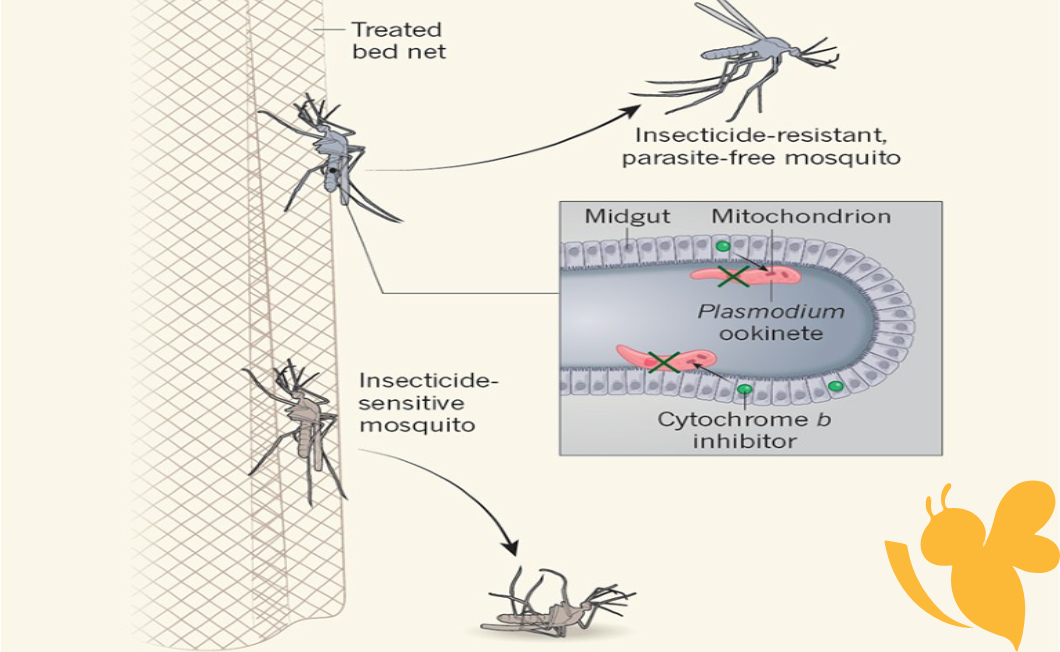Recent advancements in malaria control have introduced innovative strategies that enhance the effectiveness of traditional methods, notably through the development of bed netting systems that deliver antimalarial drugs directly to mosquitoes. This novel approach, pioneered by the Southwest Research Institute (SwRI) in collaboration with Harvard and Oregon Health & Science University, utilizes Endochin-like Quinolones (ELQs) to target malaria-causing parasites within mosquitoes themselves . By either coating the netting with an ELQ solution or integrating the drug into polyethylene filaments woven into the nets, this method addresses the critical challenge posed by mosquito resistance to conventional insecticides.
Current efforts aim to kill mosquitoes with insecticide rather than curing them of malaria.
But a team at Harvard University has found a pair of drugs which can successfully rid the insects of malaria when absorbed through their legs. Coating bed nets in the drug cocktail is the long-term aim.
Sleeping under a bed net has been one of the most successful ways of preventing malaria as the main malaria-spreading mosquitoes hunt at night.
Vaccines to protect children living in high-risk malaria areas are also recommended.
Nets are both a physical barrier and also contain insecticides which kill mosquitoes that land on them.
Malaria is one of the leading infectious disease killers worldwide, leading to 263 million cases and 597,000 deaths in 2023. Although there was significant progress toward preventing the disease at the turn of the century, in the last decade cases and deaths have plateaued, due in part to widespread insecticide resistance in mosquitoes. Insecticide-treated bed nets, one of the most commonly used malaria control tools, have in turn become less effective.
The researchers performed a first-of-its-kind test of 81 antiparasitic compounds by applying them directly on Anopheles gambiae mosquitoes—key vectors for the disease—in order to identify which ones killed Plasmodium falciparum parasites, which cause over 90% of human malaria cases worldwide.
Native to tropical and subtropical regions around the world, female Anopheles mosquitoes pass parasites to humans through saliva shared when they bite. Parasites attack and reproduce within the liver and red blood cells causing a variety of symptoms ranging from mild to severe. If left untreated, malaria can lead to brain damage, organ failure and even death, especially among children and other vulnerable populations.
While historical methods like DDT offered temporary relief from malaria transmission, they ultimately succumbed to issues such as resistance and cost-effectiveness . The introduction of ELQ-infused bed nets could mark a paradigm shift in how we approach malaria prevention. With ongoing evaluations highlighting the need for alignment with WHO guidelines for long-lasting insecticidal nets (LLINs), it is crucial for future research and development efforts to focus on strategies that incorporate both immediate mortality effects and longer-term parasite management within vector populations .
Read more
NFL Icon Jim Irsay, Heart of the Colts, Passes Away at 65 US adds Qatari aircraft to Air Force One support fleetSarah H
Also on site :
- US adds Qatari aircraft to Air Force One support fleet
- Divided House GOP seeks to pass Trump's tax bill
- Volvo Shifts Gears with First-Ever In-Car Use of Google Gemini

